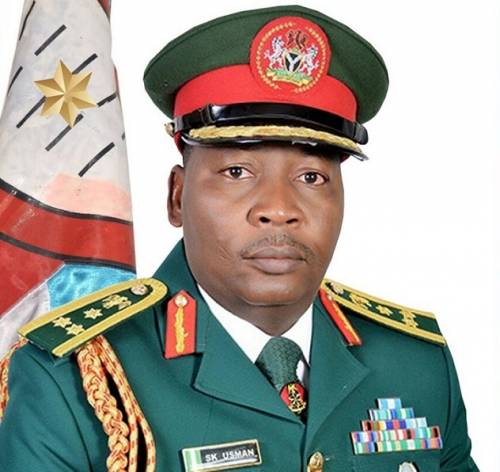Listen to the article
Nigeria’s counter-insurgency operations faced not only a physical battle in the North-East but an equally challenging propaganda war waged by Boko Haram insurgents, according to former Nigerian Army spokesman Brigadier General Sani Usman (retd.).
Speaking at an event marking the 35th anniversary of the Federal Capital Territory chapter of the Nigerian Institute of Public Relations in Abuja on Saturday, Usman revealed how the terrorist group’s sophisticated misinformation tactics threatened to undermine public trust in government institutions during the height of the conflict.
“We were in the middle of an information war that tested our credibility, speed, and strategic communication under pressure,” Usman explained. “We fought two wars simultaneously—one was a physical war against insurgents on the ground and the other, an information war against their digital propaganda and global misinformation network.”
The situation reached its peak around 2014 when Boko Haram’s influence on public perception became so powerful that many Nigerians were uncertain about whom to believe. Usman candidly admitted that the insurgent group’s consistency in following through on threats gave their communications a credibility that often rivaled official government statements.
“In 2014, we had a situation where the average Nigerian did not even know whom to believe, whether the insurgents or the government,” he noted. “And this was because, sincerely speaking, when the insurgents threatened they would do something, they always went ahead to do it.”
The former army image maker detailed how Boko Haram leveraged social media platforms, particularly YouTube, to disseminate propaganda, recruit followers, and instill fear among the population. The group’s digital presence was so intimidating that even mentioning “Boko Haram” or its leader, Abubakar Shekau, in public could potentially mark someone as a target.
Faced with this sophisticated propaganda machine, the Nigerian military was forced to overhaul its entire communication strategy. Usman described how the army developed a three-part communication doctrine focused on being the first to break stories about incidents, ensuring factual accuracy, and maintaining transparency even when the news was unfavorable.
“We became the first to break our story, and we are factual and, most importantly, forthright about it. But it came with great cost anyway,” he admitted, acknowledging that the military sometimes suffered heavy casualties in ambushes and surprise attacks across the North-East region.
The lessons from this period underscored that credibility remains the strongest asset in crisis communication, Usman emphasized. By prioritizing transparency and narrative ownership, the military gradually rebuilt public trust during a critical phase of the counter-insurgency operations.
Stanley Ogadigo, Chairman of the FCT NIPR chapter, noted that the institute was celebrating 35 years of “impactful living” and would continue to strengthen professional ethics among public relations practitioners.
Boko Haram, under Abubakar Shekau’s leadership, gained international notoriety after the 2014 abduction of nearly 300 schoolgirls from Chibok, an event that drew global attention to the conflict. Shekau reportedly killed himself in 2021 rather than surrender to the Islamic State West Africa Province (ISWAP), which has since emerged as the dominant jihadist faction in the North-East.
Now in its 15th year, the insurgency has had devastating consequences for the region. The conflict has resulted in numerous military and civilian casualties and displaced more than two million people across the Lake Chad basin. The security situation remains complex, with rival jihadist factions continuing to clash for control of territory and influence.
The insights shared by Usman highlight the evolving nature of modern conflicts, where battles are fought not only on physical terrain but also in the realm of information and public perception—a reality that has fundamentally changed how military forces approach strategic communication during counter-insurgency operations.
Fact Checker
Verify the accuracy of this article using The Disinformation Commission analysis and real-time sources.




17 Comments
If AISC keeps dropping, this becomes investable for me.
Exploration results look promising, but permitting will be the key risk.
Good point. Watching costs and grades closely.
If AISC keeps dropping, this becomes investable for me.
Nice to see insider buying—usually a good signal in this space.
Good point. Watching costs and grades closely.
Good point. Watching costs and grades closely.
Nice to see insider buying—usually a good signal in this space.
Good point. Watching costs and grades closely.
The cost guidance is better than expected. If they deliver, the stock could rerate.
If AISC keeps dropping, this becomes investable for me.
Uranium names keep pushing higher—supply still tight into 2026.
The cost guidance is better than expected. If they deliver, the stock could rerate.
Good point. Watching costs and grades closely.
Exploration results look promising, but permitting will be the key risk.
I like the balance sheet here—less leverage than peers.
Good point. Watching costs and grades closely.